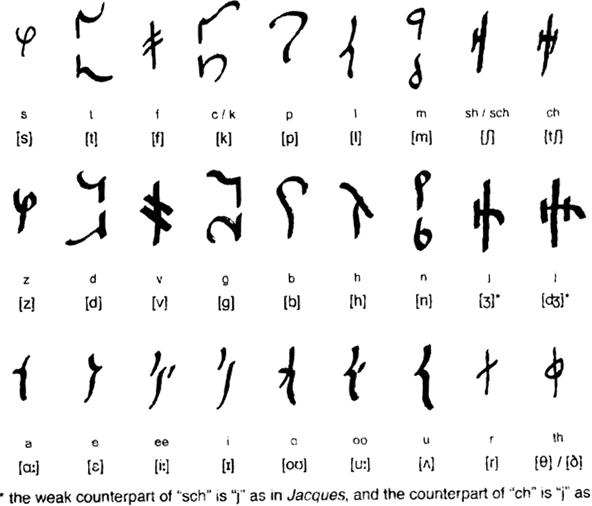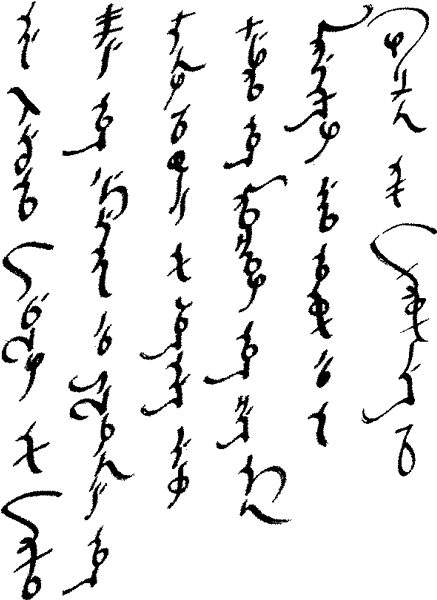
Lintlik was developed by Linus Lee in his sophomore year of high school while looking for a more natural way to express logical statements (in the mathematical sense). Originally designed in conjunction with a language of the same name, Lintlik can be used to write English, German, and Latin as well, and can easily be adopted for other latin alphabet-based language using diacritics. The script is designed so that the pen moves fluidly down the paper with minimal pausing or delay, and is designed around the relationships between lines rather than the relative size and lengths of lines so that distortions in the letters' shapes cannot change their meaning.
The Lintlik alphabet is based on a small set of key vowel and consonant phonemes: a, short e, short i, long i (ee), long o, short u, long u for vowels, and s, t, f, k, p, l, m, sh, ch, th for consonants. A "weak" sound is then associated with each of those dominant consonant sounds. In addition, many letters have a beginning form and an ending form. These are all shown in the chart below: the first row is dominant, the second is weak, and the third is vowels, except for "th" and "r", which are neutral consonants, neither dominant nor weak.

Lintlik also has its set of diacritical marks and punctuation. For example, the German Umlaut (as in ä, ö, and ü) are expressed with double dot to the right of the letter, and any double consonants (two consonants in a row) are written with the consonant written one time, with a single dot to its right (example here being the double S).


All human beings are born free and equal in dignity and rights. They
are endowed with reason and conscience and should act towards one another
in a spirit of brotherhood.
(Article 1 of the Universal Declaration of Human Rights)
Constructed scripts for: Ainu | Arabic | Chinese languages | Dutch | English | Hawaiian | Hungarian | Japanese | Korean | Lingala | Malay & Indonesian | Persian | Tagalog / Filipino | Russian | Sanskrit | Spanish | Taino | Turkish | Vietnamese | Welsh | Other natural languages | Colour-based scripts | Tactile scripts | Phonetic/universal scripts | Constructed scripts for constructed languages | Adaptations of existing alphabets | Fictional alphabets | Magical alphabets | A-Z index | How to submit a constructed script
[top]
You can support this site by Buying Me A Coffee, and if you like what you see on this page, you can use the buttons below to share it with people you know.

If you like this site and find it useful, you can support it by making a donation via PayPal or Patreon, or by contributing in other ways. Omniglot is how I make my living.
Note: all links on this site to Amazon.com, Amazon.co.uk
and Amazon.fr
are affiliate links. This means I earn a commission if you click on any of them and buy something. So by clicking on these links you can help to support this site.
[top]